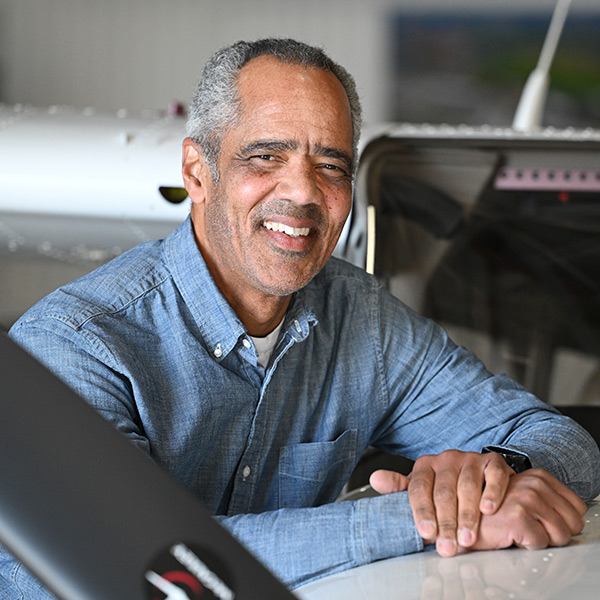Let it snow
Ski-flying the Adirondacks backcountry
As we flew west-northwest through the Sacandaga River Valley in New York’s Adirondack Mountains, the 1953 Cessna 170B’s Continental O-300 hummed steadily and the snow-covered terrain below appeared tranquil and utterly uninhabited. That impression changed, though, once Piseco Lake came into view. We began to spot movement on its frozen surface.
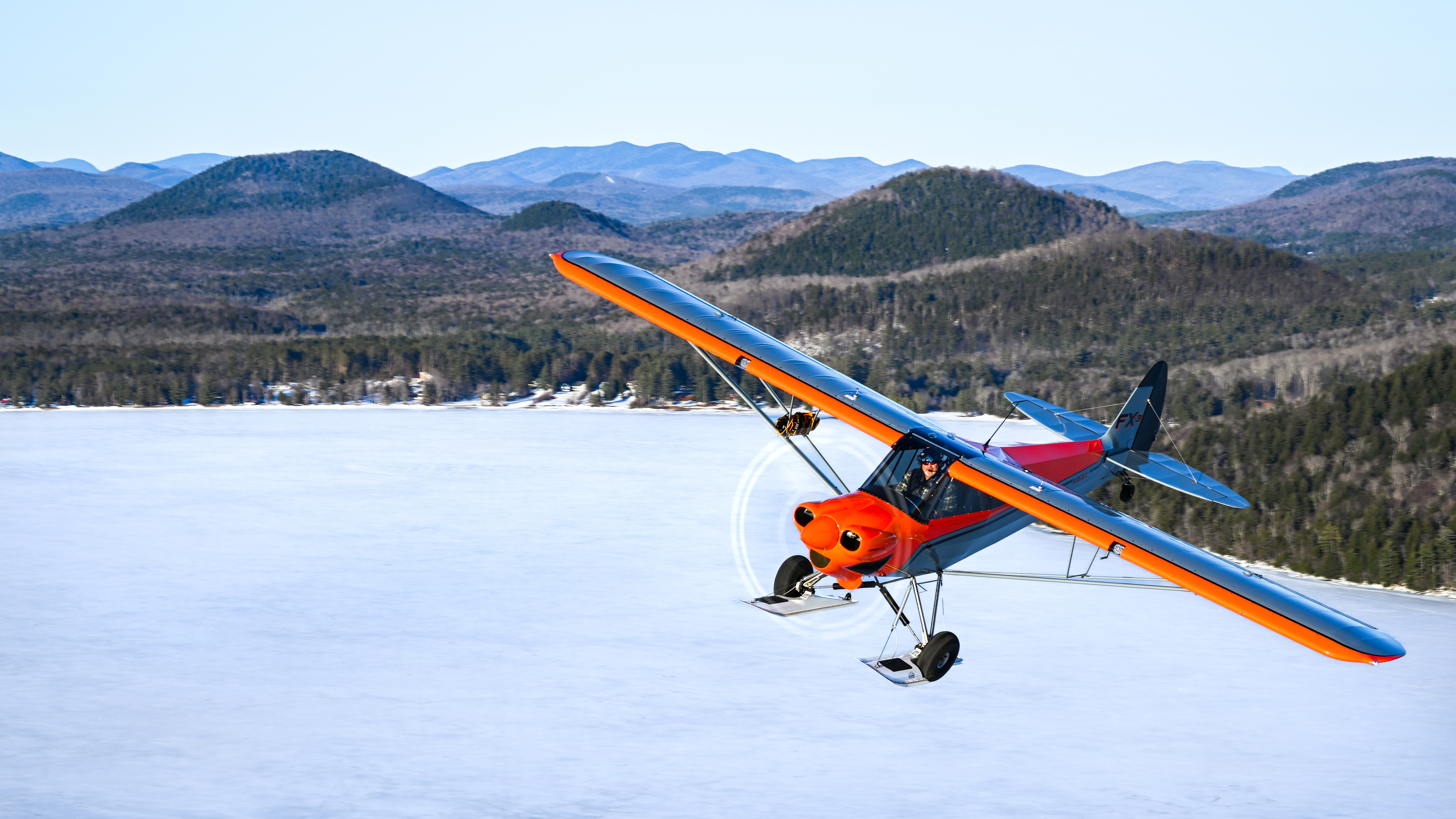
Soon it became clear that the lake was a hotbed of activity, hosting numerous snowmobiling, snowshoeing, and ice-fishing enthusiasts. We could also see a three-ship flight of ski-equipped CubCrafters Carbon Cubs making low passes over a clear section of the lake to check the snow’s condition. They would be joining us.
Mark Keneston, CubCrafters’ regional sales manager for the Northeast and Great Lakes, led the way with Peter Kaido, a mechanical engineer from Syracuse, New York, and Dan Caposella, who runs a tool distribution business in Connecticut, in trail formation. Kevin Purstell, an A&P who has been flying since 1990 and has worked with Keneston on several projects, handled overwatch and camera-ship duties.



Keneston routinely organizes outings like this in part to demonstrate the capabilities of various Carbon Cub models. On this day he was flying the latest version of the FX-3, a builder-assist model known for strong performance. Equipped with CubCrafters’ new 186-horsepower CC363i engine driving a constant-speed propeller, the FX-3 has a 2,000-pound gross weight and a top speed of 145 mph, making it the fastest of the Carbon Cub family.
In addition to popular options including the company’s new paint scheme, Keneston’s airplane was equipped with wheel skis from Summit Aircraft Skis, a company that CubCrafters acquired in 2022. Kaido and Caposella’s Carbon Cubs also had wheel skis, which allow them to operate easily from paved runways and turf strips. The wheel skis showed off their versatility at our first stop, Piseco Airport (K09), just north of the lake. Purstell, whose Cessna 170B was not on skis, landed first. Conditions were ideal. The runway was clear and the ramp unoccupied, with plenty of room to arrange the Cubs for photos and brief the day’s flying.
One of the reasons people find general aviation attractive is because it offers direct access to out-of-the-way places we might not visit otherwise. The destinations vary from small, rural airports to backcountry turf strips and mid-river gravel bars that are barely accessible to land vehicles and often challenging to reach on foot.
As many pilots know, sometimes the prospect of traveling even to mainstream destinations, including islands typically served by ferries, such as Mackinac Island in Michigan, and Nantucket and Martha’s Vineyard in Massachusetts, often presents just enough hassle to dissuade would-be visitors. In contrast, flying to those places is not only quick and easy, but also offers the flexibility of setting one’s own schedule.
How many times, though, have you flown over frozen lakes and snowy fields wishing you could land on them? It doesn’t take much more than a set of skis and training to turn those wide-open spaces into runways. Indeed, flying on skis does not require a rating or endorsement, so pilots are on their own to decide on the best way to make the transition. Many pilots say the technique is fairly easy for those proficient with tailwheel aircraft. Organizations including the Recreational Aircraft Foundation, Backcountry Pilot, and AOPA’s Pilot Information Center can help pilots locate qualified instructors, clubs, and destinations.
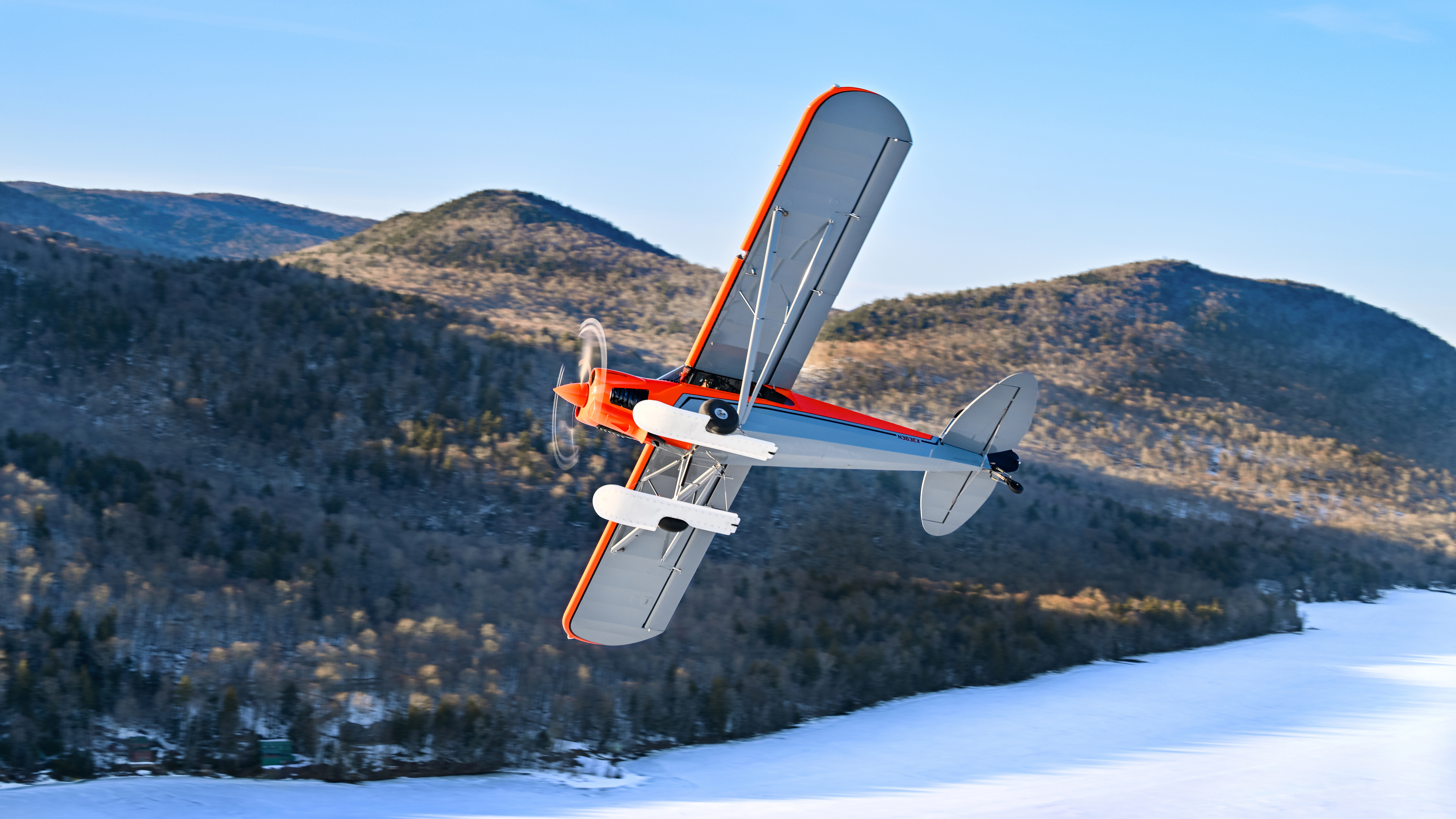
Purstell, who often flies his 170B on skis, said that while takeoffs in the snow are straightforward, the preparation for doing so is critical, from initial flight planning to packing warm clothing and “dragging” the surface before landing.
“You need to learn as much as you can about where you are going,” he said. That includes confirming that the ice on a frozen lake is thick enough to support your loaded aircraft. It is important for pilots to keep in mind that vigilance is especially important when operating off-airport. Unpleasant surprises such as hidden obstacles and surface irregularities tend to be more prevalent in the backcountry. A reconnaissance flight might not be enough to make pilots comfortable when visiting a destination in the bush.
“I recall one time, when I was planning to land on a lake and wasn’t quite sure about the conditions based on the forecast, I wound up driving to there and inspecting the ice on foot,” Purstell said. “Do whatever it takes to make you feel comfortable.”
Kaido, who also flies floatplanes, drew several parallels between flying on skis and floats. “In each case you have to remember that you have no brakes, and that hazards can hide just below the surface,” he said. “Inspection passes are important.” One big difference when operating on snow, especially with penetration-style wheel skis, in which the wheel is always sticking through the bottom of the ski, is that the protruding wheel causes a lot of drag. Momentum is your friend. You must keep moving to avoid getting stuck in deep snow. “That is where having a little extra power can really help,” Kaido said.
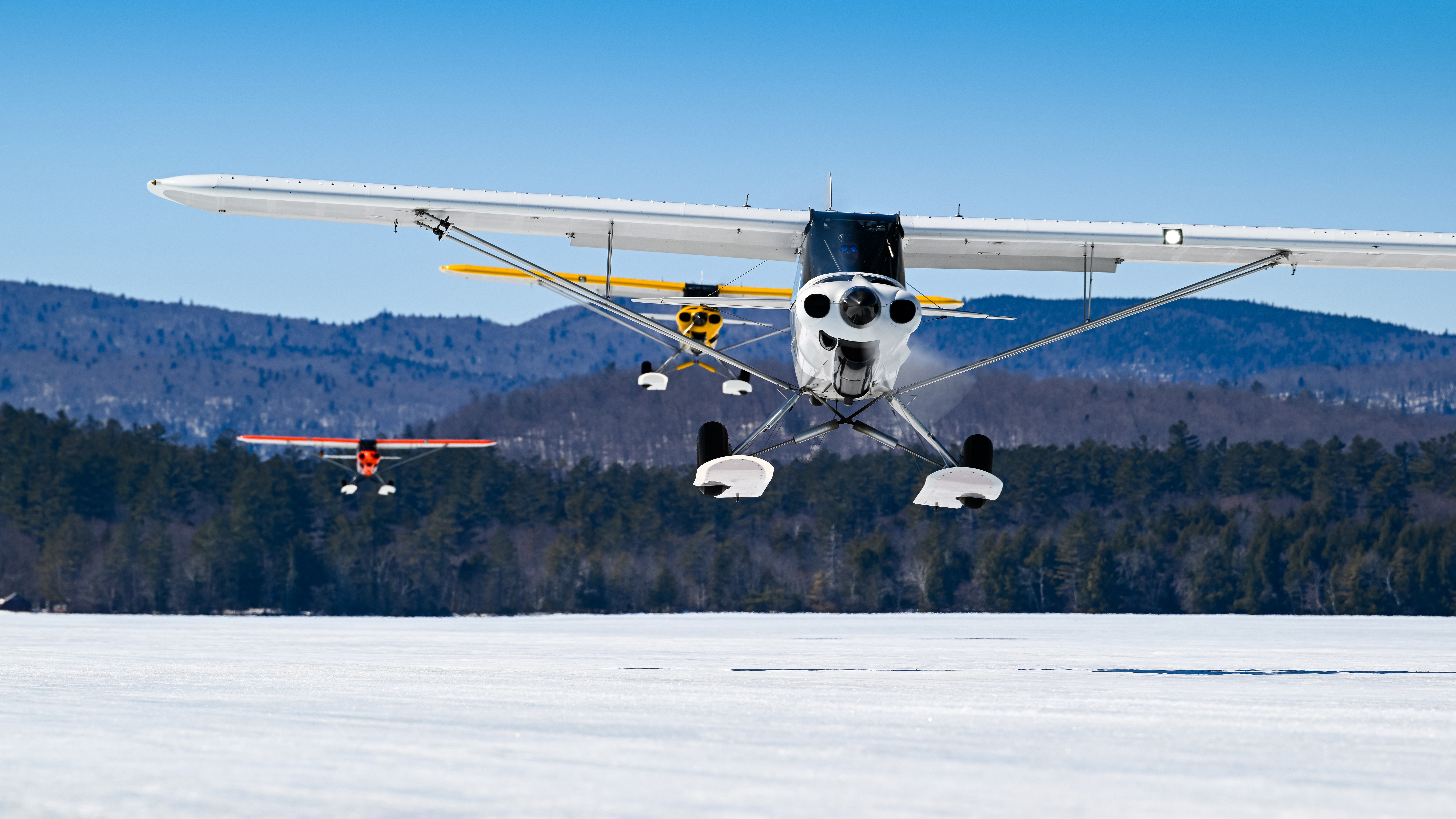


Another similarity to float flying involves smooth snow that has no tracks or other marks to aid with depth perception. “Those conditions make it similar to landing on glassy water in a floatplane, which can be tricky,” Kaido said. Using the tried-and-true seaplane technique of establishing a gradual, stabilized descent and allowing the aircraft to touch down gently works well. Judging wind direction can also be challenging but, with experience, “you start to recognize the subtle clues.”
Aircraft skis come in a variety of types, with wheel skis especially popular because of their versatility. On some models the wheels retract for operations on snow and extend for use on pavement. For pilots who prefer to keep it simple, and those who can rely on plenty of snow through the winter, basic “straight” skis, for use on snow and ice only, are a simple, efficient option.
After a thorough briefing at Piseco, we took off and headed east toward Sacandaga Lake, where conditions were ideal. The ice was thick, with a thin layer of snow and a long, wide expanse of suitable landing area away from the ice-fishing groups who had set up closer to the shore. Those folks got an impromptu airshow as the three Cubs performed formation passes and touch and goes while flying laps of the traffic pattern.
We were lucky to have weather so mild that gloves were optional and no one suffered from cold feet. Typically ski-flying requires bundling up with several layers of clothing, bringing insulated cowling covers to keep the engine warm while the aircraft is parked and packing additional survival gear in case of emergencies. We were also fortunate to have flown this mission on what probably was the last suitable day of the season for flying on snow, which was melting quickly and was mostly slush by the following day.
Part of ski-flying’s appeal lies in the way it extends the traditional flying season to include the dead of winter, particularly in northern regions. Areas with a lot of lakes—Minnesota comes to mind—become wonderlands for ski-flying pilots looking to explore new destinations and enjoy a range of landing spots.
Adirondack Park, our area of interest, was created in 1892 and was one of the first nature preserves in the U.S. Covering about six million acres, it is the largest publicly protected natural area in the contiguous states. The park, which is a National Historic Landmark rather than a national or state park, is larger than Yosemite, Yellowstone, and Grand Canyon national parks combined.
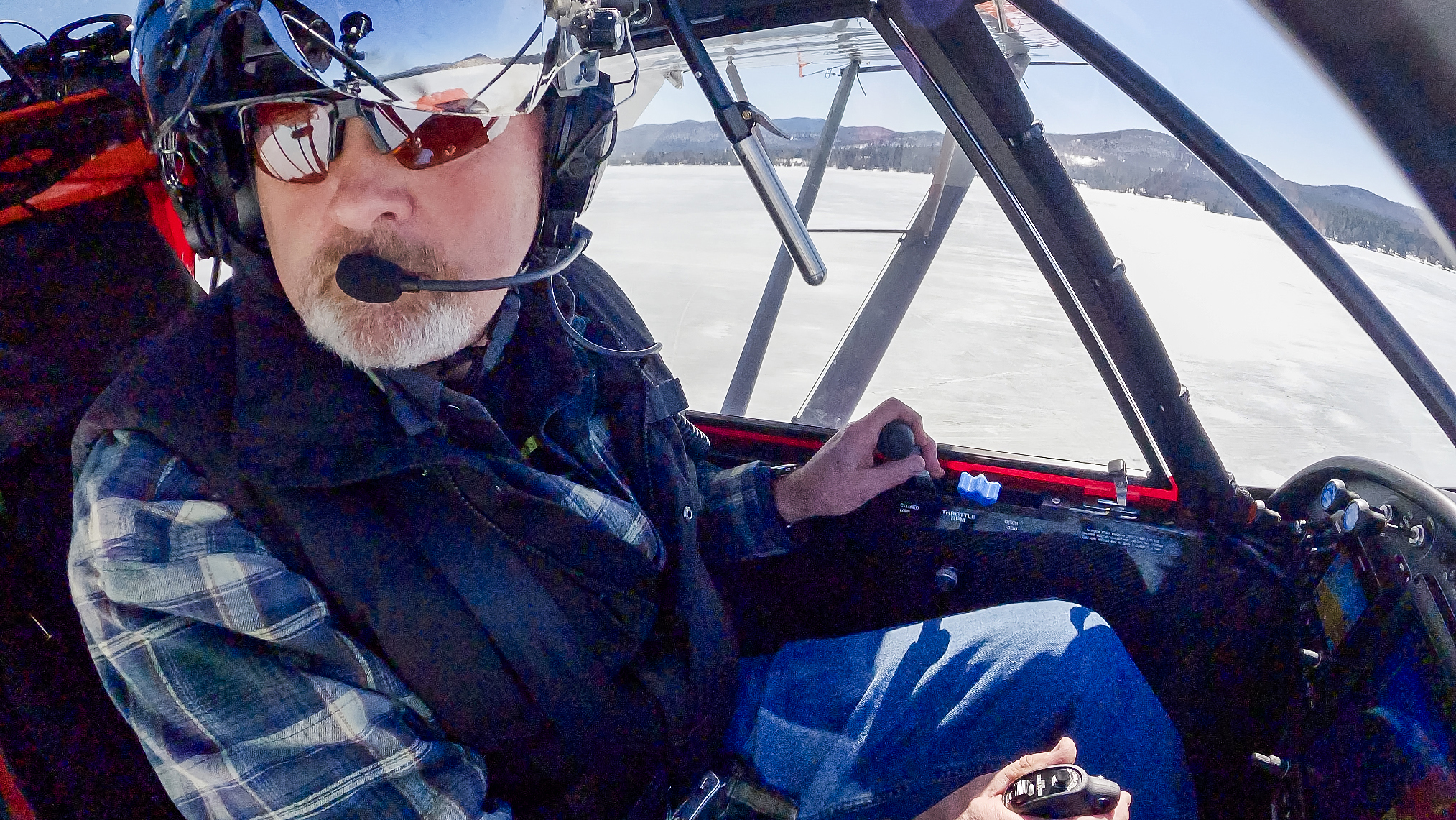
Keneston said he has seen a lot of growth in backcountry flying, which ranges from traditional trips to remote strips for hunting, fishing, and other outdoor sports to ski-flying and STOL competitions. The phase-in of the FAA’s new MOSAIC ruling in support of the light sport category is likely to drive further growth of backcountry popularity. The coming expansion of the sport-pilot eligible fleet to include heavier, higher-performance aircraft with up to four seats will give sport pilots more options in capability and cost when choosing backcountry airplanes.
“It’s good to know some of that freedom still exists in general aviation today,” Keneston said.
Manufacturers dedicated to recreational aviation, including CubCrafters, have benefitted from pilots’ apparent hunger for such freedom. In many cases, Keneston said, simply taking customers into the Adirondacks for a taste of off-airport operations on skis, floats, or wheels is enough to close a sale. 
Jonathan Welsh is a former content producer for AOPA's digital media.
